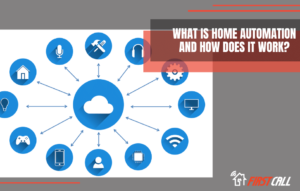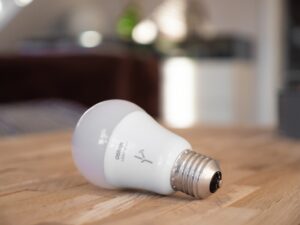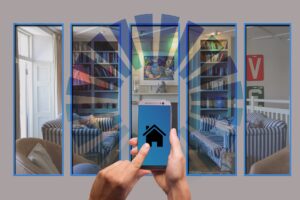What is Home Automation and How Does It Work?

What is Home Automation and How Does It Work?
The current era can be deemed the golden age of technological advancement. We have gone through incredible technological advances, especially since the early ’90s. Computers shifted from being something that wasn’t very portable to devices that fit in pockets and process countless processes simultaneously. The next significant step in technology was taken in the 2010s, which is home automation.
When someone talks about a smart home, they refer to a house with many devices that are commonly connected to a central system that controls their function. This device also allows them to be controlled remotely, eliminating the need for someone to be physically present for their operation. Home automation can encompass multiple areas of your home, from door locks to kitchen appliances. Any homeowner can control these devices with ease from their smartphone or any other connected computer. Home automation allows a level of luxury and comfort that was almost inconceivable in the past. The field sees mind-boggling advancements rapidly, and the experience is becoming more enjoyable with each new step.
If you are looking to automate a typical home, the process is not complicated. There are three main things that you need to make your house a smart home. They are;
- Smart appliances
- A solid and dependable Wi-Fi connection
- A smart home system to collect and use the information of the devices
Let’s start with explaining what a smart device and a smart home system is and build up to how home automation works.
What is a Smart Device?
To build a feasible and easy home to live in, you need to have many appliances such as fridges, lights, and climate control. A smart device refers to the same machines but with an added feature to be controlled remotely through Wi-Fi connectivity. This device is connected to your smart home system, and it can make some decisions on its own, while the smart home system dictates some. Examples of smart devices include TVs, fridges, locks, lights, bells, cameras, speakers, etc. These devices can be bought one at a time and connected to the smart home system, making it easy to gradually transition a traditional home into a fully automated one.

What is a Smart Home System?
A smart home system is the central point of all your home automation process. This is also called a smart hub in several places. This can be of two types; a physical hub present in your home or software to which all your devices are connected online. This system gathers information from all your devices, analyzes it, and processes it to make decisions based on the homeowner’s preferences. This hub allows you to control all your devices through a single application dedicated to the hub through your smartphone or any other connected device.

The home automation market is still under constant development, but still, there are multiple options for smart home systems that you can choose from. However, not all smart home systems will be compatible with the smart appliances that you have. Therefore, you must check the compatibility online before purchasing any new device or a smart hub.
How Home Automation Works
Initially, smart homes incorporated the use of X10 or Insteon to communicate between the devices in the house; Bluetooth and Wi-Fi have grown in popularity considerably in the current times. Homes that were not built with the idea of a smart home can be refitted with smart devices to attain the same functionalities.
The most common communication protocols for home automation are Zigbee and Z-Wave. These are based on transferring short-range, and low-powered radio signals between the devices called mesh networks. Both have the same applications, but a difference comes in their range. Z-Wave can work on distances up to 30 meters from the device, while Zigbee has a range of 10 meters. Zigbee chips can be obtained through multiple companies, while Z-wave is only available at Sigma Designs.
Just having several smart appliances scattered across the home doesn’t make it automated. You need to have a central unit that connects all the devices to create a remotely controllable system. All smart appliances in a home are connected to a home automation controller, also known as the smart home hub. This hub senses and processes all the information that is generated and sent by the devices. This hub analyzes the data and moulds the usage of the devices based on the homeowner’s preferences. It unites all the separate devices into a single, smart unit controlled by the user remotely. There are several examples of smart hubs. Amazon Echo, Google Home, and Samsung Smart Things are amongst the most notable ones.

The events of a smart home can be time-based or trigger-based, set upon the home owner’s preference. A good example of a time event is that you can set the blinds in a home to lower at some time in the evening. A triggered event is based on an action that is supposed to happen, resulting in a specific device operating—for example, unlocking the doors only when the homeowner’s phone is nearby the house or turning the lights of a room on when someone enters.
A significant development in the area is the integration of machine learning and artificial intelligence. These are becoming increasingly popular since their introduction, not only in home automation. Artificial intelligence is widely used in voice and speech recognition systems, allowing users to operate their automated homes through their voice. Machine learning takes this a step ahead as the smart home can make decisions based on previous instances and recognize owners’ voices. Multiple systems use voice-activation to operate; Google Home and Amazon Echo are the most commonly known ones. They act as virtual assistants who learn the preferences of their owners and adapt the smart home accordingly.
Home automation has brought with it countless benefits such as better convenience, comfort, security and efficiency. And the home automation market has grown to the extent that there are numbered devices that have not yet been automated. Home automation progresses a little more each day, as everything has room for improvement.
BEGIN WITH US!
Our experts are part of a hand-selected team of security professionals who will guide
you through a plan that will fit your company.
home security right here LOCALLY. Stimulate our economy and keep your money and your business local!









